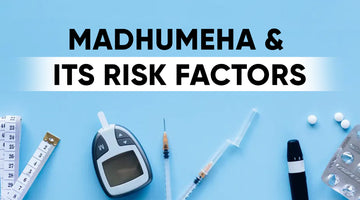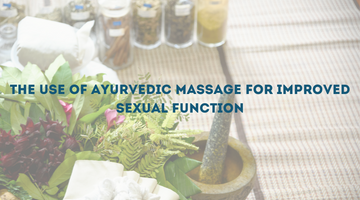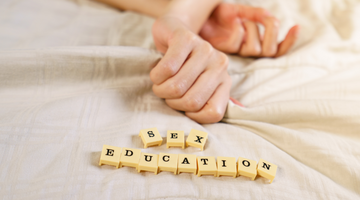
Diabetes is a medical condition in which the body does not produce enough insulin to process the glucose in the blood. Diabetes has been known since the first century B.C. when a Greek physician named Aretus the Cappadocian named it Diabainein, which means "A Siphon," referring to the disease's excessive urination. Diabetes was first recorded in 1425, and the Greek word Mellitus, which means "Like Honey," was added in 1675 to reflect the sweet smell and taste of the patient's urine. An unrelated and uncommon disorder Similarly, Madhumeha is a condition in Ayurveda in which a person passes Honey-Like (Sweet) urine Hyperglycemia (Hyperglycemia) is caused by reduced insulin production and decreased insulin sensitivity.
It is one of the 20 types of Prameha (Urological Disorder) described in various Ayurvedic classics such as Charaka Samhita, Sushruta Samhita, Ashtanga Sangraha, Madhava Nidana, Yoga Ratnakara, and others. The causes of Madhumeha, according to ancient seers, are excessive use of Guru (Heavy to Digest), Snigdha (Unctuous), Amla (Sour), and Lavana (Salt) Rasa, food prepared from newly harvested grains, new wine, Asya Sukha (Sedentary Life Style), Atinidra (Excess Sleep), Avyayama (Lack Of Exercise), Achinta (Lack Of Mental Exercise).
Chronic hyperglycemia is associated with significant long-term consequences, particularly organ damage or dysfunction, particularly of the kidneys, eyes, nerves, heart, and blood vessels. Diabetes is the seventh leading cause of death, and its prevalence is increasing in both developed and developing countries. It is the most serious metabolic disease, affecting nearly every organ and system in the body. Diabetes currently affects more than 135 million people worldwide, with that figure expected to rise to 300 million by 2025.
India has the most Diabetes patients in the world. According to data published by the International Diabetes Federation in 2006, the number of people with type 2 diabetes in India is approximately 40.9 million, with a projected increase to 69.9 million by 2025. Diabetes affects approximately 10% of Indians aged 65 and older.
Diabetes Is Classified Based On The Cause Of The Disease:
- Type I Diabetes is caused by 'Beta' cell destruction, which usually results in absolute insulin deficiency.
- Type II Diabetes - Due to a variable degree of
- Insulin resistance.
- Insulin secretion is impaired.
iii. Glucose intolerance and insulin resistance, which generally worsen with age.
- Other types of Diabetes as a result of
- Impaired Beta cell function as a result of genetic flaws.
- Impaired Insulin action as a result of genetic flaws.
iii. Pancreatic diseases
- Endocrinopathies.
- Substances (chemically induced).
Infections Such As Congenital Rubella, Cytomegalovirus, And Others
Risk Elements
- A family tree
- Obesity (BMI greater than 27kg/m2)
- Age greater than 45 years
- Hypertension (blood pressure greater than 140/90 mm Hg)
- HDL levels less than 35mg/dl and/or triglyceride levels greater than 250mg/dl
- Physical inactivity as a habit
Clinical characteristics
- Increased urine frequency (Polyuria)
- Heightened appetite (Polyphagia)
- Extreme thirst (Polydipsia)
- Urine turbidity
- Weakness / Tiredness
- Loss of weight
- Ulcer that won't heal
- Disturbances in vision
- Glans penis inflammation
Symptoms in elderly diabetes patients may differ significantly from the classic triad of polyuria, polydipsia, polyphagia, and weight loss. They might show up with fatigue, anorexia, failure to thrive, loss of motivation, concentration difficulties, and urinary incontinence
Complications That May Occur
The following complications may appear in the later stages of diabetes mellitus:
- Palmar and plantar burning sensation (neuropathy)
- Carbuncles and boils
- Gangrene
- General weakness
- Retinopathy
- Damage to the kidneys (Nephropathy)
- Cardiovascular problems
Examinations
Illness Specific
- Assessment of plasma glucose level
- Unpredictable blood sugar levels (RBS)
- Fasting blood sugar levels (FBS
- Postprandial blood sugar levels (PPBS)
- Urine routine and microscopic examination
Glycosylated haemoglobin (HbA1c)
- Lipoprotein Profile
Additional Examinations
- Serum creatinine and blood urea
- E.C.G.
iii. Examination of the fundus
- Electrolytes in the blood
Diagnosis
Corroborating symptoms and plasma glucose levels are used to make the diagnosis.
- Fasting plasma glucose greater than 126 mg/dl after an overnight fast (or)
- Random plasma glucose level greater than 200 mg/dl (or)
- Two-hour postprandial glucose level > 200 mg/dl
Management strategies
- Avoidance
- Preventive measures for borderline diabetic patients include the use of various preparations made from Yava (Barley), Mudga (Green Gram), Old Rice, Bitter Gourd, Drumstick, Methi (Fenugreek), Patola (Snake Gourd), Pumpkin, Cucumber, Bimbi, Watermelon, Buttermilk, Triphala, and so on.
- Ritucary and dinacharya
- Increase in calorie-consuming activities/regular exercise - Brisk walking, swimming, etc
- Consistent use of rasayana drugs - For example - Amalaki Rasayana,
- Limitation of sugar/sugar products, fried foods, and dairy products
- Wine restrictions, excessive use of oil, clarified butter, milk, sugarcane products, cakes, and meat from domestic and aquatic animals
- Lack of daytime sleep and laziness
- Medical supervision
Treatment
- Nidana Parivarjana - Avoidance of tubers, sweets, dairy products, soft drinks, fried foods, and sweet fruits such as mango, banana, custard apple, and date.
- If the patient is obese, Samshodhana chikitsa (bio-cleansing therapies) in the form of vamana, virechana, and vasti are to be performed; however, this must be decided by a qualified Ayurvedic physician. If the patient is thin and lean, only Shamana chikitsa (Palliative therapy) is advised.
- Drug therapy - In Ayurveda most of the drugs indicated in diabetes mellitus may act on beta cell of pancreas thus improve insulin production/ increase insulin sensitivity. The following drugs/ formulations are useful to control type II diabetes mellitus. In the case of type I diabetes mellitus, these drugs/ formulations may be used as supportive therapy in addition to conventional insulin therapy to prevent long-term complications.
- Yogic practices
Lean diabetic patients may be advised to perform specific yoga positions that are believed to benefit them with the least physical stress. Certain postures are believed to stimulate the pancreas and improve its function.
The following yogic practices are beneficial in type 2 diabetes; however, they should only be performed under the supervision of a qualified Yoga therapist. The Yoga therapist should determine the duration of each exercise.
- Katiichakr! Tdasana, Pavanamuktasana, Gomukhasana, and Shalabh! sana, Vakrasana, and Sha! Mayur, nkasana, Dhanurasana! sana, Pashchimottanasana, ushtrasana, and others
- Suryabhedana pranaama, Bhastrika, Bhramari
- Vastra dhauti, Kunjala, Shankhakha Prakshalana
Counseling Entails Advising The Patient On How To Proceed
- Do 30-60 minutes of physical activity per day.
- Increase your intake of barley, wheat, mudga, and roasted chana or bengal gram.
- Limit your intake of potatoes, rice, milk, milk products, and fatty foods.
- Take special care of your personal hygiene, especially your feet and hands.
- Avoid any injury and seek medical attention immediately if you sustain an injury or develop a skin infection.
- Tobacco and alcoholic beverages should be avoided in any form.
- Reduce or eliminate your intake of sweets.
- Regular blood glucose monitoring and medical examinations
HbA1c (glycosylated hemoglobin) test twice a year
- Annual eye examination
- The patient's foot is examined twice a year/daily.
- Renal function testing on a yearly basis
- Quarterly blood pressure checks
- Annual lipid profile
- Annual cardiac examination
Referral Indications:
- Renal failure and serious infections
- Linked to complications (diabetic foot, coronary artery disease, diabetic nephropathy, diabetic neuropathy, diabetic retinopathy, and so on) and medication non-response
In The End
Diabetes can not be cured completely but can be kept in control with Ayurvedic practices without any other side effects on your body. Moreover, with Jeevani it can be delayed for a longer time. Also, it's not just about Ayurvedic or any other medications, following a disciplined life with proper yoga, exercise, diet, etc there is no need for any medications. The AADAR family always wants everyone to live without any medications and have a healthy life.
We have Health Experts who can easily connect with you and discuss your sexual concerns. You can consult your family doctor first to get the most accurate diagnosis, or you can contact our Health Expert or connect with us at +919867667699.




